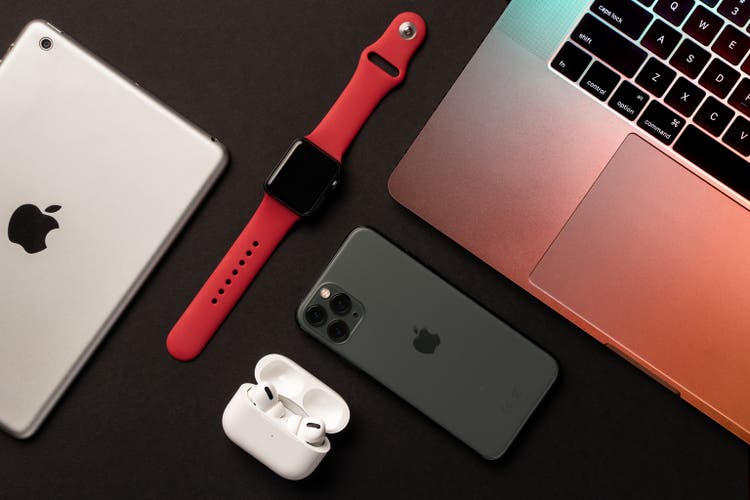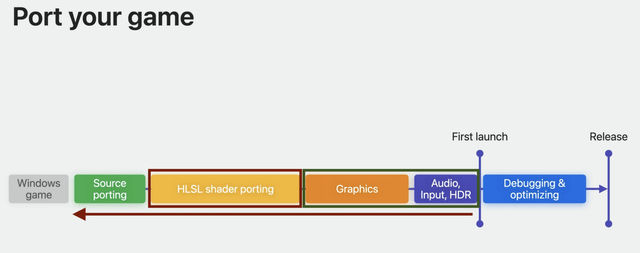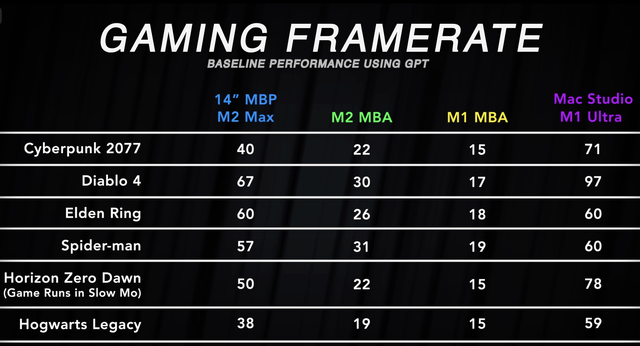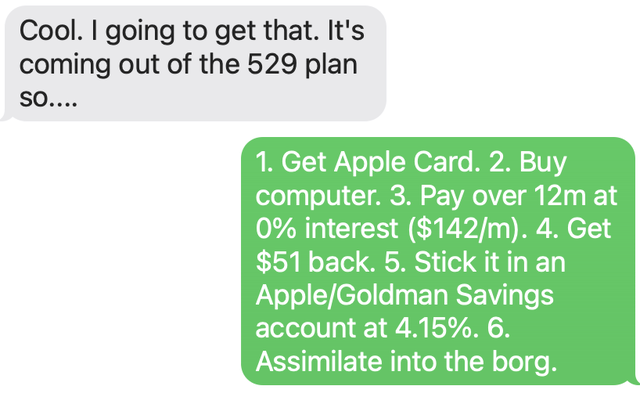Summary:
- Vision Pro stole the show at WWDC, but some important developments got overlooked in the process.
- One of these is the new Game Porting Toolkit: a DirectX-to-Metal emulator and automatic shader conversion, reducing fixed costs of porting of AAA Windows games to Mac.
- Apple hopes this will boost Mac sales by bringing more AAA titles to Mac and attracting non-hardcore gamers, despite historic struggles with gaming reputation.
- Mac still has hurdles like limited market share and higher upfront costs compared to Windows PCs.
- Early tests indicate the M2 Max and M1 Ultra can emulate DirectX 12 games well.
Shahid Jamil
So Fast
All I could think during the first two-thirds of Apple’s (NASDAQ:AAPL) Worldwide Developers Conference (WWDC) keynote was, “Slow down!” I’ve been watching these things since they first started streaming them on the internet, and this was by far the fastest pace I had ever seen. All of iOS, their most important software, in under 18 minutes. Three new Macs in under 14 minutes. WatchOS was the only segment that seemed even close to a normal pace.
A lot got overshadowed by Vision Pro, and a lot of the really interesting stuff was saved for later in the week. Remember that WWDC’s purpose is to get the new software that is coming in the fall to developers in beta, and to spend time helping them prepare for those launches. After the keynote is the more technical Platforms State of the Union and a myriad of breakout sessions on all the new stuff. Many hours of footage.
Though it isn’t a live show anymore, some get invited to a live screening at Apple Park, and the rest can get one-on-one time with Apple engineers online for their $99 annual developer’s fee. It’s a hugely important event in the Apple calendar, and sets the tone for the whole year on the technical side, making sure the September product launches go smoothly.
One of the things that totally got lost in the shuffle may turn out to be very important for the Mac, already with a ton of momentum from the Apple Silicon ARM Macs. In the keynote, when Apple was blitzing through macOS in under 14 minutes, they mentioned a new Game Porting Toolkit. It was literally a dependent clause, and I’m not even sure I registered it at the time.
This could turn out to be a big boost to Mac sales.
Windows DirectX 12 On A Mac
I miss the old WWDC live event. The developers paid to be there and it was a business trip. There was no gratuitous applause, and you heard their genuine reactions in real time to everything. The students, there by lottery, were particularly rowdy from the back of the hall.
The crowd would have gone nuts for this one. Melting in the seats and fainting in the aisles. DirectX is a programming interface on Windows for accessing the features of graphics cards. It’s particularly important in gaming, because the GPU is what makes those games play at high resolutions and frame rates. Apple has their own GPU for Apple Silicon GPUs interface called Metal.
DirectX 12 is the latest from Microsoft, and the latest and greatest AAA games are built around it. The open-source community has tools to emulate DirectX 11 and below on a Mac, and 12 is coming soon, but this is a pretty poor experience compared to the same game on Windows. In recently announced support for Windows VMs on Apple Silicon Macs, Microsoft is supporting up to DirectX 11.
So what is in the Game Porting Toolkit?
- A DirectX-to-Metal emulator built into the next macOS developer tools, available in beta soon. From the demo they gave (The Medium), it runs at about half the frame rate (~30 for Medium) as the ported app with some dropped frames (HD resolution on an M2 Max). Considering it’s running 2 emulation layers in real time, x86-to-ARM in addition to DirectX 12, that’s fairly amazing.
- Automatic shader conversion. Remains to be seen how well this works, but if it does, it is huge. Programmable shaders were a big Nvidia (NVDA) innovation and, under the hood, an important reason why their gaming GPUs are so popular. A lot of what you are seeing in a AAA game in DirectX is happening in these shaders.
So this is sort of a 1-2 punch that knocks out two of the big hurdles to porting Windows AAA games to Mac. The first one is probably the more important. In the porting process, you don’t even get to see your game running on a Mac until very late in the process. So it’s asking a game studio to walk down a blind alley for months, and hope it leads to somewhere. This way, they can see it running on a Mac with a single command line.
The shader conversion, if it works, and I’ll be a little skeptical until I hear feedback, erases a huge portion of the coding work.
Apple video screenshot annotated
That’s a graphic Apple used to show what the porting process looks like. You see “First Launch” all the way to the right, but now that goes all the way at the beginning of the process, not close to the end. In the yellow box are the shaders, and that work is eliminated (supposedly). In many AAA games graphics and audio are handled by middleware like Unity (U) and Unreal game engines, which are cross-platform, so that work goes away.
This is what is left for the middleware-using studios:
The game engine is handling the gray box, so all is left is the source port in green and the polish in blue. This pulls out a substantial portion of the work in porting AAA titles to Mac.
Why Is The Mac A Bad AAA Gaming Platform?
iPhone is one of the most successful mobile gaming platforms, and Apple would very much like to draft off that success for Mac and AppleTV. You can play most iPhone or iPad games on Mac or AppleTV, but expectations on those larger screens are different. People want big 3D worlds with a lot of gameplay. They want AAA games, there just aren’t that many for Mac, and their releases can come years after the Windows version.
How did that happen? AAA games look and play fantastically well on even the least expensive Apple Silicon Macs. After years of ignoring it, Apple game controller software is now incredibly good, with very low latency.
There are a lot of reasons, but the three biggest are large fixed costs of each version of a game, the relatively small user base of Mac users, and Apple’s bizarre insistence on sourcing all their GPUs for Intel Macs from AMD (AMD), not Nvidia, as preferred by AAA gamers and video professionals. AAA studios develop for console and PC first, and then once they recoup those substantial investments think about a Mac version.
So Apple is trying to change all the parts of that:
- The new toolkit reduces the fixed cost of a Mac port.
- The Mac user base is growing, and getting younger, especially in the US. Apple has a ton of momentum with Gen Z in the developed world.
- Macs still don’t have Nvidia GPUs, but they are trying to make that irrelevant with the shader converter. Mac GPUs have their own benefits. For example, on Nvidia’s best gaming card, video RAM maxes out at 24 GB, and 192 GB of unified memory on the new Mac Studio.
It will not be easy. Gamers and game studios thought Steve Jobs didn’t respect them, and they were probably right. At some point, that morphed into “Apple hates gamers.” It’s a hard meme to bust up. It also led to the game studios thinking that their customers are on PC, and that’s right.
The hard core PC gamers who spend half their day on the message boards are likely to stick with PC. A lot of them like to build their own rigs, and that’s not how Apple rolls.
What This Means For Mac
If this toolkit pans out, Apple just removed a lot of the fixed costs associated with a game port. But the bigger issue remains market share. There are plenty of reasons dating back to the 1980s, but in 2023, why do people choose Windows over Mac?
- Upfront cost- Despite the total cost of ownership of a Mac being lower, there is always a less expensive PC option, though they are not equivalent. Apple’s low end starts at the PC midrange, and there is nothing comparable to Apple Silicon yet.
- The IT manager at their job chose Windows. IT managers are Microsoft’s (MSFT) most important Windows customers.
- They don’t like Mac, or see no reason to switch from Windows. Probably a lot of overlap with 1 and 2.
That covers the majority of it. The cost differential is never going to change, but Apple is trying to mitigate it with Apple Card, offering 12 months of payments at 0% interest and 3% cash back in the US. Outside the US, they have various 6-12 month payment plans with no interest. Marketing to the group in #3 only gets you so far. This is why Apple directs so much marketing at young people, many of whom only know iPhone or iPad, and have little PC experience.
Apple is getting better at working with IT managers, especially since iPad became popular in enterprise. But that is another place they have to overcome long-held negative perceptions. IT managers thought Steve Jobs hated them, and they were probably right. He publicly referred to them as “orifices” on several occasions, and by that, he meant exactly what you think he meant. That morphed into “Apple hates enterprise,” and while Jobs was alive, they were probably right.
But I also think there is a smaller, but still large group who would like to switch to a Mac except for one thing. Even if not an avid gamer, they play one or two AAA games regularly, they are not available for Mac, and that’s a deal-breaker.
So that is the group Apple is looking to peel off with this. In the scale of Mac installed base market share, about 17% worldwide now, up from around 4% at the nadir, I think this could be a significant group, and why Apple just spent so much money making this toolkit. Even if it just takes market share up to 19%, that’s significant for the Mac unit, about a tenth of Apple’s topline.
Will it happen? Tim Cook has been trying to reverse these Jobs unforced errors for years with little success. This time may be different, and the DirectX 12 emulator may be the reason. I’m just assuming that some of those people paying $99 for their developer license will use it to play new AAA games like Starfield on an M2 Max or Ultra, so they can earn internet points on Twitch or Reddit. Already we see CyberPunk 2077, Diablo IV and Hogwarts Legacy, and others. The Mac gaming wiki has a growing list of AAA titles and how they play under emulation. There’s a chance they can stir up some interest that way.
The M2 Max and M1 Ultra seem to play DirectX 12 games pretty well under two layers of emulation. Here are some frame rates from one tester on different Macs:
“MBP” = MacBook Pro. “MBA” = MacBook Air. “GPT” = Game Porting Toolkit, not the other GPT. (YouTube screenshot)
The M2 Ultra will likely see a big boost over all these, but that is just released. This is all pretty impressive for two layers of emulation, and these game makers have to be thinking, “If it works like this under two layers of emulation, what would a native game look like?” People are starting to notice, and maybe Apple can finally get a little momentum here.
One More Thing
The other thing that caught my eye at the keynote was the 15″ MacBook Air starting at $1300, and $1200 education pricing. MacBook Air is very popular with students, mostly because it’s the cheapest Mac laptop. They previously only made a 13″, $200 less. This fills what I’ve thought is a huge gap in their lineup, and makes the 14″ MacBook Pro superfluous. I’m guessing we’ve seen the last of that model.
Later this year, I’ll be spending a month in Florida with my octogenarian parents, and that’s probably the computer I’ll take with me. But this baby is not aimed at old folks like me, but the back-to-school crowd. Apple has recently started introducing MacBook Air at WWDC. Their Q4 starting July gets a boost from this market.
Anyway, as they introduced it, I was thinking all this. And then the text messages came in. I have a lot of friends with college-aged kids, and the kids were already hammering them for this computer. What configuration should we get for our incoming freshman? This is how the Borg assimilates the Windows/Android people:
From a Windows/Android friend. A 529 plan is a tax-advantaged education savings account. (iMessage screenshot)
Again, there is a whole group of Gen Z who only know iPhone and iPad as computers. I sold three MacBook Airs and got three Apple Card Family signups that day. I should get a commission.
Analyst’s Disclosure: I/we have a beneficial long position in the shares of AAPL either through stock ownership, options, or other derivatives. I wrote this article myself, and it expresses my own opinions. I am not receiving compensation for it (other than from Seeking Alpha). I have no business relationship with any company whose stock is mentioned in this article.
Seeking Alpha’s Disclosure: Past performance is no guarantee of future results. No recommendation or advice is being given as to whether any investment is suitable for a particular investor. Any views or opinions expressed above may not reflect those of Seeking Alpha as a whole. Seeking Alpha is not a licensed securities dealer, broker or US investment adviser or investment bank. Our analysts are third party authors that include both professional investors and individual investors who may not be licensed or certified by any institute or regulatory body.
At Long View Capital, we follow the trends that are forging the future of business and society, and how investors can take advantage of those trends. Long View Capital provides deep dives written in plain English, looking into the most important issues in tech, regulation, and macroeconomics, with targeted portfolios to inform investor decision-making.
Risk is a fact of life, but not here. You can try Long View Capital free for two weeks. It’s like Costco free samples, except with deep dives and targeted portfolios instead of frozen pizza.


